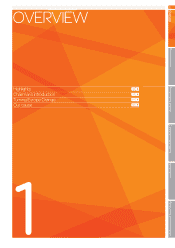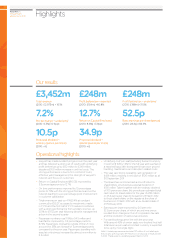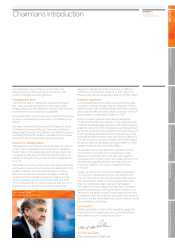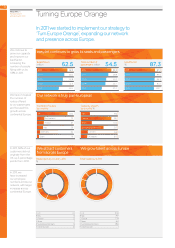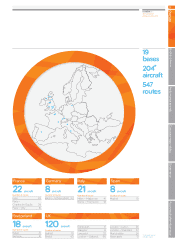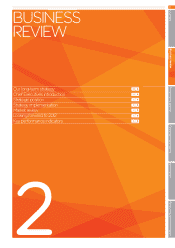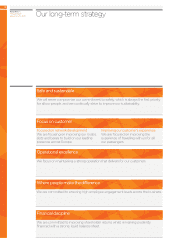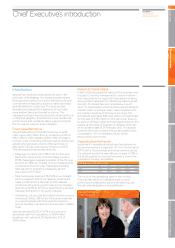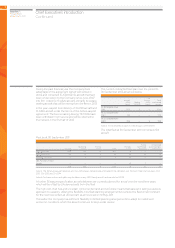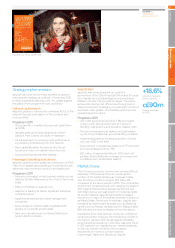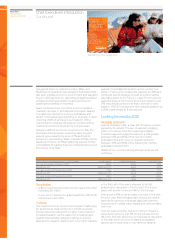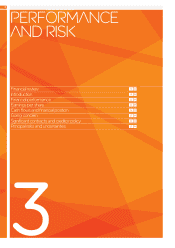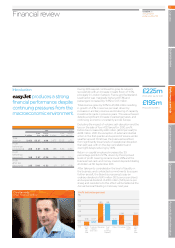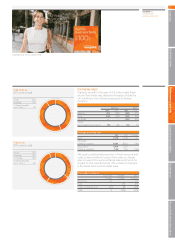EasyJet 2011 Annual Report Download - page 13
Download and view the complete annual report
Please find page 13 of the 2011 EasyJet annual report below. You can navigate through the pages in the report by either clicking on the pages listed below, or by using the keyword search tool below to find specific information within the annual report.
easyJet plc
Annual report
and accounts 2011
11
Overview Performance and risk Corporate responsibility Governance Accounts & other information
Business review
easyJet remains concerned that monopoly
infrastructure providers across Europe, of both airports
and airspace, continue to impose higher charges,
despite the uncertain economic climate. Consequently
there is now an increased focus on regulated airport
charges, and easyJet has actively participated in the
regulatory dialogue for Spanish; French; UK; Dutch;
German; and Italian airports in 2011. Monopoly airports
need to become more efficient, with infrastructure and
associated charges built around the needs of
passengers on point-to-point carriers such as easyJet.
This will bring wider economic benefits by promoting
tourism and trade.
The UK Government has reversed its election promise
to turn Air Passenger Duty into a per plane tax. Instead
it is proposing to lower the tax on long-haul flights and
increase it on short-haul flights. Evidence shows this is
both economically and environmentally damaging.
Aviation’s entry into the European Union Emissions
Trading System means that there is no longer any
environmental case for taxes on aviation.
Pleasingly the European Commission is planning in 2012
to propose reforms to the consumer rules that govern
aviation. easyJet welcomes this announcement and will
be working to ensure the proposals give passengers
the rights they deserve, but do not expose airlines to
unmanageable risks of the type we saw arising from
the ash clouds of 2010. The Commission will also be
working on a reform of the slot regulation. We hope
this will give a renewed opportunity to ensure that slots
are allocated to airlines such as easyJet which will use
them efficiently.
Capacity planning and capital allocation
The Board is focused on driving returns for
shareholders and consistent with this focus has
outlined a clear set of financial objectives and metrics.
The Board’s objective is to achieve returns in excess
of the cost of capital and this will be measured by the
ROCE achieved within a financial year. The Board has
set a target of 12% ROCE through the five years
planning cycle and for the financial year ended 30
September 2011 easyJet achieved a ROCE of12.7%.
After providing appropriate returns for shareholders,
capital is allocated to support the network. Capital
expenditure will be principally allocated to the following
activities:
– maintaining fleet size through the replacement
ofleased aircraft as they exit the fleet and the
maintenance, repair and overhaul of engines
(anoverhaul being required when an aircraft has
operated for between eight and nine years in easyJet
service in accordance with the manufacturer’s
maintenance programme)
– new network opportunities where the Board is
satisfied that they can deliver on-target returns within
a tight and defined timescale
In the past year, easyJet has implemented a new and
more rigorous approach to assessing network returns.
Routes are measured on the returns they are delivering
against the Company's 12% ROCE target. Capacity on
underperforming routes is reallocated, or performance
managed and profitability improved, to deliver an
appropriate return. In a dynamic market place,
profitability of routes can change over time and by
ensuring that route returns are continually monitored
the Company is most effectively able to drive ROCE.
Capacity is also principally deployed on routes which
operate on a year-round basis, with less than 5% of
easyJet’s capacity allocated to summer-only routes, all
of which are intended to deliver upper quartile ROCE
(on average delivering ROCE above 12%).
Fleet plan and growth
easyJet has built flexibility into its fleet planning
arrangements such that it can increase or decrease
capacity deployed, subject to the opportunities
available and prevailing economic conditions. The
Company also has flexibility to move aircraft between
routes and markets to improve ROCE.
12.7%
ROCE achieved in year
79%
13 ppt improvement
inOTP
Example only. Not a current offer.


